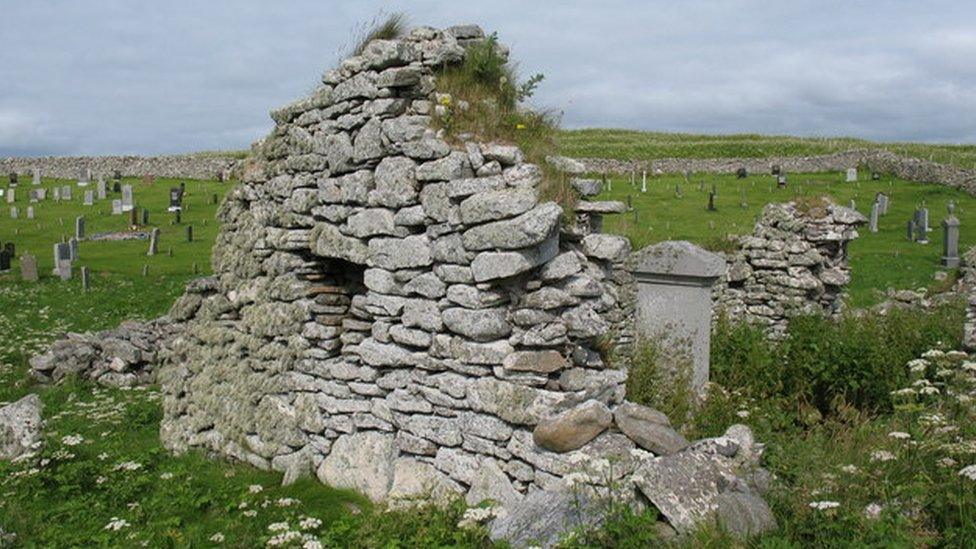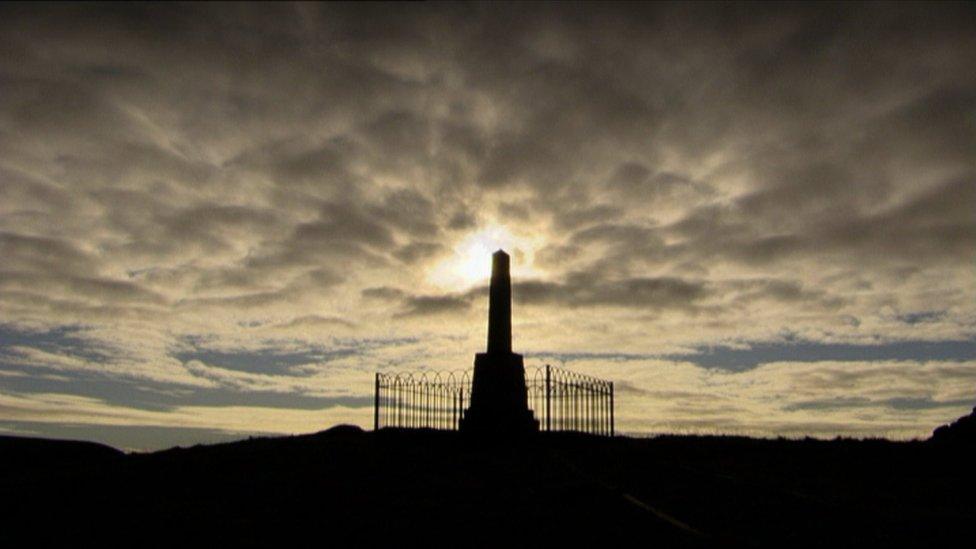Iolaire Disaster petition an archive 'treasure'

A memorial in Lewis recalling the Iolaire Disaster of January 1919
At a glance
A petition raised after the Iolaire Disaster is one of 20 documents selected to mark the Scottish Council on Archives' 20th anniversary
More than 200 men from the Western Isles died when the ship carrying them home at the end of WW1 was wrecked
The petition from July 1921 set out the economic impact of the loss of so many men
The islands' fishing industry failed and unemployment increased
- Published
A document setting out the economic impacts of a maritime disaster in the Western Isles at the end of World War One has been selected for a new exhibition.
More than 200 men died when their ship, HMY Ioliare, was wrecked on a reef near Stornoway in Lewis on 1 January 1919.
Most of those who died were from Lewis or Harris, but many communities across the Western Isles were affected.
A petition was raised in July 1921 to alert authorities to the emotional and economic effects of the loss of so many men to the isles.
Crofting and fishing were the main sources of livelihood at the time.
The petition warned of the high rates of unemployment and cost of living, and the collapse of the isles' fishing industry.
Julia Fraser, who started the petition, was the first woman to enter local government in the Western Isles when she was elected to Lewis District Committee in 1919.
The document was rediscovered in 2017 by an archivist in a council store, and is held in the care of local authority archive service, Tasglann nan Eilean.
The petition has been selected as one of 20 historical documents to mark the 20th anniversary of the Scottish Council on Archives, external.
Items from the archives of Aberdeen and Dundee city councils, Scottish Jewish Archive Centre and Scottish Ornithologists' Club are also in the new Twenty Treasures list.
Heavy uniforms
The Iolaire set sail from Kyle of Lochalsh on the west Highlands mainland on New Year's Eve 1918.
Making its final approach into Stornoway harbour on a dark night and in a strong gale, it changed course at the wrong point.
With the lights of the harbour in sight, the ship struck rocks at full speed and immediately began to tilt, filling up with water.
Although the stern of the boat was at one point just six metres (20ft) from land, many of the men onboard were weighed down by their heavy uniforms and were unable to swim ashore.
A public inquiry was unable to establish the reasons for the disaster.
The last survivor of the Iolaire - which means "eagle" in Gaelic - died in 1992.
Earlier this month, an appeal was launched to help raise money to save a cemetery where some of those who died in the disaster were buried.
The graveyard at Bragar on the west coast of Lewis is at risk of being lost to coastal erosion.
Related topics
- Published11 November 2022

- Published1 January 2019
